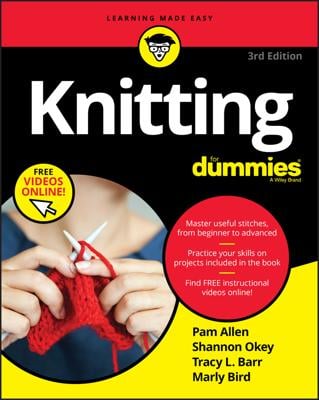To work the make 1 increase (abbreviated m1), you create a new, separate stitch (hence, making 1 increase) between 2 stitches that are already on the needle.
When you get to the point where you want to make an increase, pull the LH and RH needle slightly apart. You’ll notice a horizontal strand of yarn, called the running thread, connecting the first stitch on each needle. You use the running thread to make the new stitch. The increased stitch will be a twisted stitch that crosses to the right or to the left and leaves no little hole. After you work to the point between 2 stitches where you want to increase, you can twist in either direction:
Twisting to the right: Bring the tip of the LH needle under the running thread from back to front. Then insert the RH needle through the draped strand from left to right and knit as normal.

Twisting to the left: Insert the tip of the LH needle under the running thread from front to back. Then, with the RH needle, knit the strand through the back.

After you work a make 1 increase, check to make sure that it’s twisted in the direction you intended. If it isn’t, undo your new stitch — it will only unravel as far as the running thread — and try it again.
You can make 1 increase from the purl side, as well:
To work a right-twisting make 1 increase on the purl side, purl the strand by going into the front loop (the part that’s closest to you) from right to left and purling as normal.
To work a make 1 increase that twists to the left from the purl side, insert the RH needle through the back loop from left to right and purl as normal.
After you work a make 1 increase, check to make sure that it’s twisted in the direction you intended. If it isn’t, undo your new stitch — it will only unravel as far as the running thread — and try it again.
You can turn a make 1 into a decorative eyelet (a little hole) increase by knitting or purling into the running thread without twisting it.

